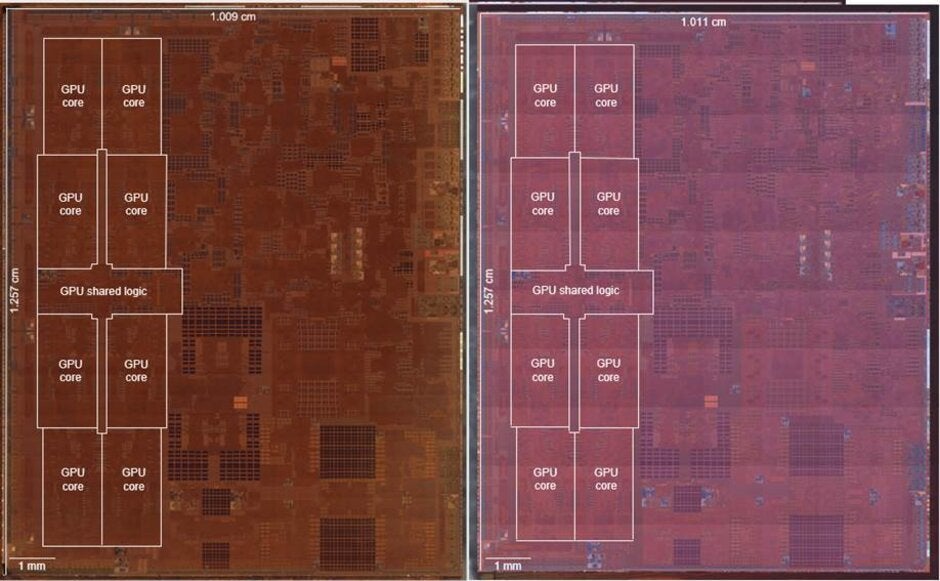Apple could use powerful 5nm A14X Bionic chipset for 5G iPad Pro in 2020-2021

When Apple introduced the new 2020 iPad Pro tablets last month, we were surprised to find that instead of an A13X Bionic chipset, both the 11-inch and 12.9-inch models were equipped with the A12Z Bionic SoC. Apple quickly stated that the new slates deliver the "highest performance ever in an iPad." And that may be true, but a tweet disseminated the other day by TechInsights states that the GPU architecture used on the A12Z Bionic is the same as the one used on the A12X Bionic found inside the 2018 iPad Pro units.
The A12X Bionic and A12Z Bionic are both built with the same 7nm process node by TSMC and have the same octa-core configuration (four high-performance CPU cores and four energy efficient-cores) and memory. The only difference is that seven of the eight GPU cores on the A12X Bionic were activated while all eight are activated on the A12Z Bionic. Both chips have a maximum CPU clock speed of 2.49GHz.
Apple could turn to a powerful A14X Bionic SoC for 5G enabled iPad Pro models later this year
Perhaps we will see an A13 Bionic chipset on a new iPad mini that might surface later this year. TF International's Ming-Chi-Kuo says that in 2020, Apple will unveil a 7.9-inch iPad mini tablet sporting a mini-LED display. The latter will be used as Apple slowly transitions to micro-LED screens; mini-LED screens are similar to AMOLED displays in that they offer a wide color gamut and do not require the use of a backlight. This means that like OLED panels, the color black is created by turning off pixels in the appropriate area. Dark Mode reverses the look of the UI from black text on a white background to white text on a black background; this prevents the blinding white background from hurting and irritating eyes in a dark room or at night. Those using Dark Mode will see a slight improvement in the battery life of their tablet since pixels turned off do not draw on the device's battery.

The LiDar time of flight depth sensor on the new iPad Pro models offers enhanced AR capabilities
If Apple decides to introduce a new iPad mini this fall, it would probably be equipped with the same A13 Bionic that currently powers the iPhone 11 family. After all, Apple equipped last year's iPad mini with the A12 Bionic.
There is speculation that Apple decided not to create an A13X Bionic for the new iPad Pro units because outside of adding the LiDar depth sensor and the improved camera setup on the back, nothing on the updated units requires additional heavy lifting by the processor. It also gives Apple the chance to design its first chipsets for the iPad that will be produced using TSMC's 5nm process node (the A14X Bionic).

iagram from TechInsights show that the GPU on the A12X Bionic and A12Z Bionic are the same
The 2020 iPhone 12 series will be powered by the 5nm A14 Bionic. With an 84% increase in transistor density, the A14 Bionic could contain as many as 15 billion transistors each compared to the 8.5 billion shoehorned into the A13 Bionic and the 10 billion transistors found in the A12X Bionic. While this much power would seem to be overkill for a new iPad mini, it would be perfect for the next variant of the iPad Pro. And the latter could be coming later this year if Apple decides to ship a 5G version of its top-of-the-line tablet. The A14X Bionic could make its debut on 5G versions of the 11-inch and 12.9-inch iPad Pro tablets.
While tablet sales have been struggling for years, the iPad had a couple of good quarters during the second half of fiscal 2019. And thanks to the coronavirus outbreak, game-playing teens, those taking classes or working from home, and people who enjoy viewing streamed content are now in the market to buy their first tablet or to upgrade an older model.
Follow us on Google News














Things that are NOT allowed:
To help keep our community safe and free from spam, we apply temporary limits to newly created accounts: